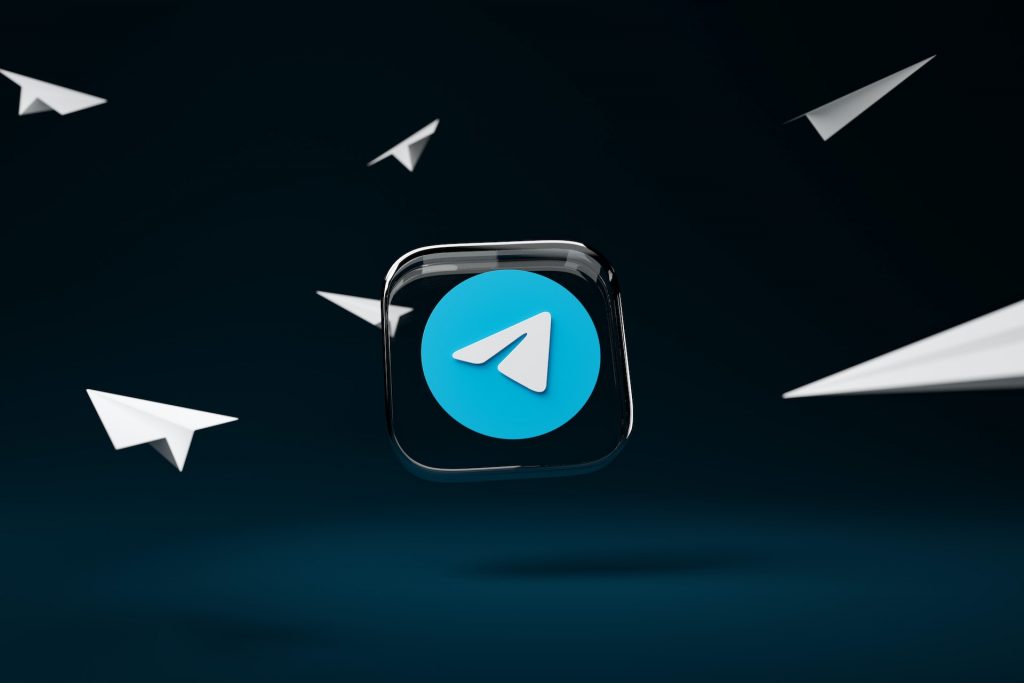
How Does Telegram Work? A Comprehensive Look — The Tech Behind Series
Jerry Wallis
17 min read

Previously, we looked into the tech behind Whatsapp & its tech stack. This time, we’re looking into Telegram, the globally accessible instant messaging service. Even if you may not have used it, you’ll likely have heard about it. But how does Telegram work?
Understanding the technology behind Telegram helps business owners appreciate the level of security and privacy offered by the app, as well as the measures taken to ensure its reliability and speed. It allows developers and researchers to build on its tech stack and create innovative new features and applications. And it enables users to make informed decisions about the information they share on the app and its potential risks and benefits.
So, in this article, we will look at the tech behind Telegram and how businesses can learn from the Telegram tech stack when they consider making their own messaging or file-sharing app.
What Is Telegram? 📨

Telegram is a cloud-based instant messaging and voice-over IP service that was launched in 2013 by two brothers, Pavel and Nikolai Durov. It allows users to send text and multimedia messages, make voice and video calls, and create groups and channels for broadcasting to large audiences.
The platform was created as a secure and private messaging app focusing on speed and reliability. Its end-to-end encryption ensures the sender can only read messages and the intended recipient, not by any third party, including itself.
Telegram has become a popular communication platform worldwide, with over 700 million monthly active users as of 2023. Its popularity is primarily due to its secure and privacy-focused features, as well as its user-friendly interface and wide range of customisation options.
Now that you know the basics, let’s dig deeper into Telegram’s architecture and API features.
The Telegram Tech Stack: Software Architecture 🏛️
Telegram’s architecture is designed to ensure secure and reliable messaging for its users. It uses a combination of client-server models, peer-to-peer networks, and cloud-based storage to achieve this goal.
The client-server model is at the core of its architecture, where clients (users) interact with the Telegram servers to send and receive messages. The servers act as intermediaries, relaying messages between clients and storing them in the cloud until they are delivered.
Telegram also uses a peer-to-peer network to optimise messaging speed and reduce server load. When two clients are connected to the same network, they can communicate with each other directly without the need for messages to go through the servers. This helps to reduce latency and improve messaging speed.
In addition to the client-server and peer-to-peer components, the service also relies on cloud-based storage for message storage and synchronisation. When a user sends a message, it is encrypted and stored in the cloud, which can be accessed from any device connected to the user’s account. This ensures messages are always available and synchronised across multiple devices.
It’s evident that Telegram’s architecture is designed to provide a secure, reliable, and fast messaging experience for its users while minimising server load and optimising performance.
🛡️ Security Features Of Telegram
Telegram is known for its strong focus on security and privacy and offers several features to protect user data and communication. Here are some of its essential security features.
- End-To-End Encryption: Telegram uses end-to-end encryption to protect messages from interception and ensure the intended recipient can only read them. This means that messages are encrypted on the sender’s device and decrypted only on the recipient’s device, with no third party (including itself) can access the message contents.
- Self-Destructing Messages: It allows users to set a self-destruct timer for messages, which automatically deletes them after a specified time period. This feature helps to ensure that sensitive or confidential messages are not left visible on the recipient’s device for an extended time.
- Secret Chats: It offers a “Secret Chat” feature, which provides an additional layer of security by using end-to-end encryption, preventing the chat from being forwarded, and allowing users to set a self-destruct timer. Secret Chats are device-specific and not stored on Telegram’s servers, providing extra protection against unauthorised access.
- Two-Factor Authentication: It allows users to enable two-factor authentication (2FA) for their accounts, which requires a password and a verification code sent to the user’s mobile device. This helps to prevent unauthorised access to user accounts and protects against account hijacking.

Telegram’s security features aim to provide users with a secure and private messaging experience, giving users control over their data and communication.
Telegram APIs 🔗
Telegram offers two different APIs for developers to interact with their messaging platform: the Telegram Bot API and the Telegram TDLib API.
🤖 Telegram Bot API
The Telegram Bot API is a programming interface that allows developers to create chatbots for the Telegram messaging platform. It provides developers with a straightforward way to build bots that can interact with Telegram users and perform various tasks, such as sending and receiving messages, managing chats, and responding to user commands.
Using the Telegram Bot API, developers can create chatbots that can be integrated with other services, such as web applications, social media platforms, and other messaging platforms. The Telegram Bot API supports many features, including inline mode, custom keyboards, and the ability to send files, photos, and videos.
This API is a valuable tool for developers who want to create chatbots for the platform. It provides a reliable and efficient way to interact with users and perform various tasks.
🗃️ Telegram TDLib
The Telegram Database Library — commonly known as TDLib — is a cross-platform library for building custom Telegram clients. It provides complete features and functionalities for creating high-performance, feature-rich Telegram applications for desktop, mobile, and web platforms.
The TDLib is designed to make it easy for developers to build custom Telegram clients with advanced features and capabilities, such as end-to-end encryption, group and channel management, multimedia messaging, and more. It provides a flexible, efficient, and secure way to interact with the platform and build custom messaging applications.
The Telegram TDLib is available in several programming languages, including C++, Java, and Python. It is also open-source, so developers can access and customise the source code to fit their specific needs.
To summarise, the Telegram Bot API is ideal for building chatbots that can be integrated with other services. At the same time, the Telegram TDLib API is better suited for building custom clients with advanced features and capabilities.
Artificial Intelligence & Machine Learning 🧠
Telegram uses Artificial Intelligence (AI) and Machine Learning (ML) technologies to improve its user experience. These technologies enable it to provide more personalised and relevant content to users while also improving the efficiency and effectiveness of its messaging platform.
One example of Telegram’s use of AI is its chatbot technology. It allows users to interact with automated bots to answer questions, provide information, and even perform actions such as ordering food or booking a ride. These bots use natural language processing (NLP) to understand user input and provide relevant responses, making it easier for users to interact with the platform and get the needed information.

Another example is its spam detection and prevention features. The platform uses automated machine learning algorithms to analyse messages in cloud chats and detect patterns of spam and malicious behaviour patterns. This helps keep its messaging platform clean and secure while reducing the unwanted messages that users receive.
Telegram’s AI and machine learning capabilities will likely continue to evolve and improve. One possibility is the development of more advanced chatbots that can understand and respond to more complex user queries and integrate AI-powered voice and image recognition features. Additionally, Telegram may leverage AI and machine learning to better understand user behaviour and preferences, enabling it to provide users with more personalised content and recommendations.
Cloud-Based Storage ☁️
Telegram’s cloud-based storage is an essential messaging platform feature, allowing users to store and access their data from anywhere on any device. In addition, this cloud-based storage system is highly secure and efficient, making it an attractive option for users who value privacy and convenience.
Telegram’s cloud-based storage works by storing user data, including messages, files, and media, on its servers in encrypted form. This data is then synchronised across all of the user’s devices, allowing them to access their data from any location on any device.
There are several advantages to using cloud-based storage. You can check out the major ones below.
- Accessibility: Cloud-based storage allows users to access their data from any device, making it easy to stay connected and productive while on the go.
- Security: It provides advanced encryption and security measures to protect user data from unauthorised access.
- Backup & Recovery: It provides a reliable backup and recovery option, ensuring that users don’t lose their data if their device is lost, stolen, or damaged.
- Scalability: It can be easily scaled up or down as per your requirements. You can increase or decrease the amount of storage you need as per your usage, which can be particularly helpful for businesses with fluctuating storage needs.
- Cost-Effectiveness: It can be a more cost-effective option than traditional storage methods. With cloud-based storage, you pay only for the storage space you use, and there are no upfront costs for hardware or infrastructure.
- Collaboration: It can also facilitate collaboration between team members by allowing multiple users to access and edit files simultaneously. This can be particularly useful for businesses with remote teams or for people working on collaborative projects.
The technical details of the platform’s cloud-based storage system include using multiple data centres in different geographic regions, ensuring that user data is always available and accessible. Additionally, it uses a distributed file system called the Telegram File System (TFS), which allows for efficient and reliable storage and retrieval of user data.
Open-Source Technology 📖
Telegram is built using open-source technology, which means that the source code for the platform is freely available for anyone to access, modify, and distribute. This open-source approach has several benefits for both developers and users.
One primary benefit of using open-source technology is that it allows for collaboration and innovation. Developers worldwide can contribute to the codebase, adding new features and improving existing ones. This can lead to faster development cycles and a more robust and reliable platform.

Another benefit of open-source technology is that it allows for greater transparency and accountability. Because the source code is freely available, anyone can review it to ensure it is secure and free from potential vulnerabilities or backdoors.
Examples of open-source technology in Telegram include the MTProto protocol, which is used to encrypt and secure user data, and the TDLib library, which is used to develop Telegram clients for various platforms. These technologies are freely available for developers to use and contribute to, helping to ensure that it remains a secure and reliable messaging platform.
👥 Open-Source Libraries To Build Telegram Bots
Several open-source libraries are available for developers who want to build Telegram bots. These libraries provide pre-built functions and modules that can help developers create bots quickly and easily without writing all the code from scratch. Some common examples include Grammy, Python Telegram Bot, Slimbot, Telegraf, Pyrogram, and so on.
One popular open-source library for building Telegram bots is Telegraf. This is a library based on the runtime environment Node.js and provides a simple and efficient way to create bots for the platform. It offers many features, including message handling, command parsing, and inline mode. Additionally, Telegraf has a vibrant community of developers who contribute to the library and provide support to other developers.
Another popular open-source library for building Telegram bots is python-telegram-bot. This library is written in Python and provides a simple and intuitive interface for building bots. It offers message handling, command parsing, inline mode, and more features. Additionally, the python-telegram-bot has detailed documentation and an active community of developers who contribute to the library and provide support to other developers.
These open-source libraries provide developers with a simple and efficient way to build Telegram bots without writing all the code from scratch. In addition, they offer a wide range of features and functionalities, making it easy to create bots that can interact with their users and perform various tasks.
User Interface Design 📲
Telegram’s user interface design is an essential aspect of the platform. It provides users with a clean, intuitive, and customisable interface that makes it easy to use the app and communicate with others. The design is characterised by a simple, minimalist aesthetic, focusing on usability and functionality.
User interface design is fundamental in messaging apps, where users must quickly and easily navigate the app, find their contacts, and send messages. A well-designed user interface can enhance the user experience, making it easier for users to stay connected and engaged with the app.
Compared to other messaging apps, the platform’s user interface design stands out for its simplicity and ease of use. The app features a clean, uncluttered layout, intuitive navigation, and clearly labelled buttons and icons. Users can also customise the app’s appearance, choosing from various themes and colour schemes.
Telegram’s user interface design is a key factor in its popularity. It provides users with a streamlined and user-friendly experience that makes connecting with friends, family, and colleagues easy. The app’s focus on simplicity and usability sets it apart from other messaging apps, making it a popular choice for users worldwide.
Blockchain Technology ⛓️
Telegram has explored the use of blockchain technology in its messaging app. In particular, the company has developed its blockchain platform, the Telegram Open Network (TON), designed to provide users with a range of decentralised services, including messaging, payments, and file storage.
One advantage of using blockchain technology in messaging apps is its enhanced security and privacy. Using a decentralised network means messages and data are not stored on a centralised server, reducing the risk of hacking or data breaches. Additionally, blockchain technology can enable end-to-end encryption and smart contracts to facilitate secure transactions and agreements.
The Telegram Open Network was designed to use a proof-of-stake consensus mechanism, which allows users to participate in the network and earn rewards for validating transactions. The network was also designed to support micropayments and to be scalable, allowing for high volumes of transactions and data storage.

However, the platform faced regulatory challenges with the TON project and ultimately abandoned it in 2020, returning the funds raised from investors.
While Telegram’s use of blockchain technology did not come to fruition, the potential advantages of using this technology in messaging apps, including enhanced security and privacy, remain an area of interest and exploration for developers and users alike.
Support For Third-Party Applications 🤝
Telegram’s robust API allows third-party developers to build and integrate their applications with the messaging platform. This support for third-party applications has been a key factor in its popularity, providing users with additional features and functionalities beyond the core messaging app.
One advantage of using third-party applications in Telegram is that it allows users to customise the app to their specific needs and preferences. For example, users can add bots to automate particular tasks or integrate other apps for file sharing or project management. This flexibility and customisation can enhance the customer experience and improve productivity.
Regarding technical details, Telegram’s API is based on the MTProto protocol, designed to provide fast and secure communication between clients and servers. The API supports various programming languages, including Python, Java, and Node.js, making it accessible to many developers. Additionally, the API provides access to multiple features, including messaging, group chats, file sharing, and more.
⚙️ Integration With Other Apps
Integration with other apps is supported through the Telegram Bot API, which provides access to various features, including messaging, group chats, file sharing, and more. The API can be integrated with multiple programming languages, making it accessible to many developers. The service also provides detailed documentation and resources for developers looking to build and integrate their applications with the messaging platform.
Using Telegram in conjunction with other apps is beneficial because it can provide a seamless and convenient user experience. For example, users can share files or messages from other apps directly or access the platform’s messaging services from within other apps. This integration can enhance productivity and streamline workflows, particularly for those frequently using multiple apps throughout their workday.
Support For Self-Hosting 👨🔧
Telegram supports self-hosting, allowing organisations and individuals to set up their private messaging networks using its infrastructure. This support for self-hosting is provided through the Telegram MTProto Proxy, which enables users to bypass censorship and access its messaging services from anywhere in the world.
A benefit of self-hosting in Telegram is that it provides greater control over data and security. By hosting messages and data on a private network, users can ensure that sensitive information is not accessible to third-party servers or government agencies. Additionally, self-hosting can provide faster and more reliable messaging services, as the network can be optimised for the organisation’s or individual’s specific needs.
The Telegram MTProto Proxy uses a custom protocol based on the MTProto protocol used in the Telegram API. This protocol provides fast and secure communication between clients and servers, even when standard messaging services are blocked or restricted. The proxy can be deployed on any server supporting the proxy protocol, allowing users to set up their private messaging network.
Telegram’s Future Development Plans 🔮
Telegram has been known for its continuous development and innovation. Some of the future development plans for the platform include improving the user interface and adding more features to the platform, such as more advanced AI and machine learning capabilities, enhanced security features, and further integration with other apps.

What does the future of Telegram look like? Well, the platform will likely continue to grow and expand its user base, particularly in regions where other messaging apps may not be as accessible or secure. Additionally, it may continue to explore and integrate new technologies, such as blockchain and decentralised storage, to further enhance its features and security.
Interestingly, its plans may also impact other messaging apps. For example, as the service continues enhancing its security features and privacy options, other messaging apps may need to improve their security measures to remain competitive. Additionally, as it continues to expand its integration with other apps and services, the platform may become centralised and more convenient for users who require a range of features and functionalities in one place.
The future of Telegram is likely to involve continued growth, innovation, and integration with other apps and technologies, which may have implications for other messaging apps in the market.
Conclusion: How Does Telegram Work? 🎇
Telegram is a powerful messaging app that has a lot to offer. It has an impressive software architecture that’s built with security in mind, providing users with end-to-end encryption, two-factor authentication, and other features that protect their privacy. Additionally, several other features, such as the Telegram Bot API and TDLib, allow developers to create their own bots and applications on top of the platform.
Its use of artificial intelligence and machine learning helps enhance the user experience, providing features such as Smart Notifications and the ability to search for images based on their content. Furthermore, its cloud-based storage allows users to store their data securely and access it from anywhere, while its open-source technology and support for third-party developers make it an attractive platform for those looking to create their own applications and integrations.
By understanding how Telegram works, you can leverage this knowledge to build successful applications for your business and reach ever-greater heights.
We believe that understanding the Telegram tech stack is crucial for anyone who wants to learn from such a successful platform. So, if you’re interested in discovering more about Telegram or need help developing such an application for your business, please get in touch with our team today!
Topics
Published On
May 03, 2023

